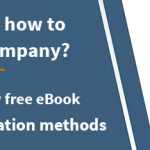Many strategic as well as financial investors are familiar with the numerous advantages of cross-border M&A, including expanding into potentially lucrative new markets, establishing a presence near existing or new clients, building and smoothing out revenue streams and diversifying international business risk. Investors, however, may be less familiar with another potential advantage of cross-border M&A, that is the possibility of creating financial and operational value through an investment strategy known as risk arbitrage.
This article will provide a brief overview of the concept of risk arbitrage and then discuss how risk arbitrage principles can be used as part of an overall M&A strategy to identify investment opportunities, build firm value and reduce firm risk.
Overview
Even though when many people hear the words “risk arbitrage” highly speculative strategies that are confined to narrow corners of the M&A world often come to mind, risk arbitrage is a very simple concept that occurs in markets and applies to businesses every day. In financial markets, arbitrage refers to a situation where an asset can be purchased for a price in one market and sold at a higher price in another market. Risk arbitrage, on the other hand, refers to taking advantage of a mispricing of risk and the impact of that mispricing on credit or asset prices to either build firm value or prevent firm value from being lost.
To provide a simple example of risk arbitrage in the credit context, let’s say that a fair interest rate for a loan based on the risk of a company or an activity is 8%. If, assuming the same level of risk, a bank is willing to lend money at a price of 6%, this represents a clear risk arbitrage opportunity for borrowers. Similarly, if borrowers are willing to pay a 10% interest rate, this represents a clear risk arbitrage opportunity for lenders because borrowers are overpaying for the actual level of risk in connection with a loan that a creditor will take.
These opportunities also frequently arise with regard to asset purchases. To take another example, let’s assume that the capitalization rate for multifamily properties in a particular market is 6%, meaning that the price of the asset is derived by dividing the net operating income of the asset by 6%. If the real risk associated with a multifamily property in the market warrants a capitalization rate of 4%, this represents a risk arbitrage opportunity for buyers, because in practical terms it will reduce the price that is paid for an asset. Similarly, if the risks associated with a multifamily property warrant a capitalization rate of 8%, the opportunity to sell the property at a capitalization rate of 6% represents a risk arbitrage opportunity for sellers because the buyer is effectively discounting asset risk by 2%.
It may well be asked how these types of opportunities can exist, as one would assume that if a risk arbitrage opportunity existed, buyers and sellers would immediately take advantage of these opportunities and the resulting market pressures would quickly cause the arbitrage spread to disappear. However, often the arbitrage spread does not disappear, principally because of three key reasons:
1) Information necessary to accurately price assets is often not available, particularly with respect to companies that are not publicly traded;
2) Assets and the market context that defines asset values are in a constant state of change which causes risk levels to fluctuate faster than they can be converted into accurate pricing terms;
3) Misperceptions of risk exist even in the face of clear information.
Risk Arbitrage and Cross-Border M&A
Risk arbitrage opportunities often exist in cross-border M&A, particularly in emerging markets due to the fact that information regarding market fundamentals or assets may be more difficult to obtain or key market drivers, such as inflation rates or currency values, may be more volatile than in more developed markets.
It commonly occurs in emerging markets, for example, that investors may assume that because a country is considered to be “risky” and companies or assets in that country by definition must be equally risky. In fact, many companies that operate in riskier jurisdictions adopt measures that protect themselves from risk such as, for example, having operations or assets abroad or hedging against currency risk. Because of this, the acquisition of a company at a discount rate of 15% to reflect country risk, when in fact the company’s risk profile merits a discount rate of only 12%, implies a risk arbitrage gain of 3%.
Risk arbitrage opportunities can also occur in highly stable markets where risk pricing in the market does not reflect real levels of company, sector or market risk. In this type of situation, assets can be sold at a price in excess of the price which reflects real market risk, creating a risk arbitrage gain.
In addition to risk arbitrage gains at the time of asset purchase, it is also possible to realize arbitrage gains throughout a company’s operation. For example, for a real estate development company, developing projects in a country where credit is mispriced can increase profitability and reduce market risk.
Risk Arbitrage and Investment Exit Issues
Many risk arbitrage strategies are employed with assets that have deep and liquid trading markets, such as publicly traded securities, so that once arbitrage opportunities are captured they can be quickly monetized. In the private M&A context, however, investors may hold an investment for many years and it can occur that the market context can significantly change over time and assets that are bought at a discount in year 1 may need to be sold at an even larger discount in year 5 due to a worsening of market risk perceptions.
For this reason, for investors that take a long-term view of strategy and building company value, risk arbitrage should generally not be used as the sole criteria for making an investment but rather as part of larger strategic investment decision that takes into account the investor’s overall strategy and the value that the acquisition of an asset or presence in a country will create irrespective of arbitrage gains.
This article was written by Darin Bifani. If you would like to discuss the potential for using risk arbitrage principles as part of a cross-border M&A strategy, please
















